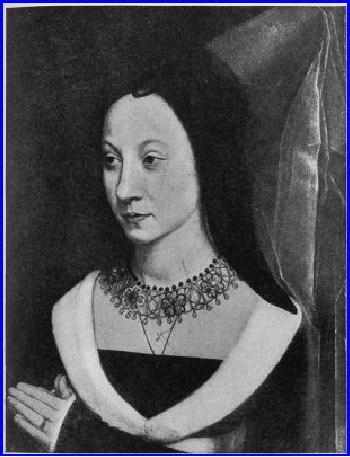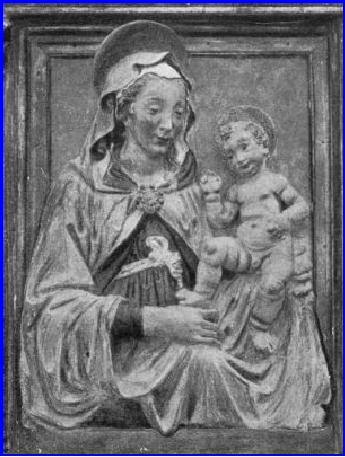 |
HOW TO DRESS YOUR TYPE |
| << THE LAWS UNDERLYING ALL COSTUMING OF WOMAN |
| THE PSYCHOLOGY OF CLOTHES >> |
of
background, outline, colour,
texture of material and how to
produce harmonious
effects by
the judicious combination of
furnishings and costumes.
To-day,
when we want to say that a
costume or the interior
decoration of a house is
the
last word in modern line
and colour, we are apt to
call it Ó la Bakst, meaning
of
course Leon
Bakst, whose American
"poster" was the Russian
Ballet. If you have
not
done so already, buy or borrow
the wonderful Bakst book,
showing
reproductions
in their colours of his
extraordinary drawings, the
originals of which
are
owned by private individuals or
museums, in Paris, Petrograd, London,
and
New
York. They are outrÚ
to
a degree, yet each one
suggests the whole or parts
of
costumes
for modern woman--adorable
lines, unbelievable combinations
of
colour!
No wonder Poiret, the Paris
dressmaker, seized upon Bakst as designer
(or
was
it Bakst who seized upon
Poiret?).
Bakst
got his inspiration in the
Orient. As a bit of proof,
for your own
satisfaction,
there
is a book entitled Six
Monuments of Chinese
Sculpture, by
Edward
Chauvannes,
published in 1914, by G. Van Oest &
Cie., of Brussels and Paris.
The
author,
with a highly commendable
desire to perpetuate for students a
record of the
most
ancient speciments of Chinese sculpture,
brought to Paris and sold
there, from
time
to time, to art-collectors, from
all over the world;
selected six fine
speciments
as
theme of text and for
illustrations.
Plate
23 in
this collection shows a
woman whose costume in
outline
might
have
been
taken from Bakst or even
Vogue. But put it the
other way round: the
Vogue
artist
to-day--we use the word as a
generic term--finds inspiration
through
museums
and such works as the above.
This is particularly true as
our little
handbook
goes into print, for
the reason that the great
war between the
Central
Powers
and the Entente has to a
certain extent checked the
invention and material
output
of Europe, and driven designers of and
dealers in costumes for women,
to
China
and Japan.
Our
great-great-grandmothers here in America
wore Paris fashions shown on
the
imported
fashion dolls and made up in
brocades from China, by the
Colonial
mantua
makers. So we are but repeating
history.
To-day,
war, which means horror,
ugliness, loss of ideals and illusions,
holds most
of
the world in its grasp, and
we find creative artists--apostles of
the Beautiful,
seeking
the Orient because it is
remote from the great world
struggle. We hear that
Edmund
Dulac (who has shown in a
superlative manner, woman
decorative, when
illustrating
the Arabian
Nights and
other well-known books), is
planning a flight to
the
Orient. He says that he
longs to bury himself far
from carnage, in the hope of
wooing
back his muse.
If
this subject of background,
line and colour, in relation to
costuming of woman,
interests
you, there are many
ways of getting valuable
points. One of them, as
we
have
said, is to walk through
galleries looking at pictures
only as decorations;
that
is,
colour and line against the
painter's background.
Fashions
change, in dress, arrangement of
hair, jewels, etc., but
this does not
affect
values.
It is la
ligne, the
grand gesture, or line fraught
with meaning and balance
and
harmony of colour.
The
reader knows the colour
scheme of her own rooms
and the character of
gowns
she
is planning, and for suggestions as to
interesting colour against colour,
she can
have
no higher authority than the
experience of recognised painters. Some
develop
rapidly
in this study of
values.
If
your rooms are so-called
period rooms, you need
not of necessity dress in
period
costumes,
but what is extremely
important, if you would not
spoil your period
room,
nor fail to be a decorative
contribution when in it, is
that you make a point
of
having
the colour and texture of
your house gowns in the same
key as the hangings
and
upholstery of your room.
White is safe in any room,
black is at times too
strong.
It depends in part upon the
size of your room. If it is small and in
soft tones,
delicate
harmonising shades will not
obtrude themselves as black can and so
reduce
the
effect of space. This is the
case not only with
black, but with emerald
green,
decided
shades of red, royal blue,
and purple or deep yellows. If
artistic creations,
these
colours are all decorative
in a room done in light tones,
provided the room is
large.
A
Louis XVI salon is far more
beautiful if the costumes are
kept in Louis XVI
colouring
and all details, such as lace,
jewelry, fans, etc., kept
strictly within the
picture;
fine in design, delicate in
colouring, workmanship and quality of
material.
Beyond
these points one may follow
the outline demanded by the
fashion of the
moment,
if desired. But remember that a
beautiful, interesting room,
furnished with
works
of art, demands a beautiful,
interesting costume, if the
woman in question
would
sustain the impression made
by her rooms, to the
arranging of which she
has
given
thought, time and vitality, to say
nothing of financial outlay;
she must take
her
own decorative appearance
seriously.
PLATE
V
Example
of the pointed head-dress,
carefully
concealed
hair (in certain countries
at certain
periods
of history, a sign of modesty),
round
necklace
and very long close
sleeves
characteristic
of fourteenth and fifteenth
centuries.
Observe
angle at which head-dress is
worn.

Metropolitan
Museum of Art
Woman
in Gothic Art
Portrait
showing pointed
head-dress
The
writer has passed wonderful
hours examining rare illuminated
manuscripts of
the
Middle Ages (twelfth, thirteenth,
fourteenth and fifteenth centuries),
missals,
"Hours"
of the Virgin, and Breviaries,
for the sole purpose of studying
woman's
costumes,--their
colour, line and details, as depicted by
the old artists.
Gothic
costumes
in Gothic interiors, and Early
Renaissance costumes in
Renaissance
interiors.
The
art of moderns in various media,
has taken from these
creations of mediŠval
genius,
more than is generally
realized. We were looking at a rare
illuminated
Gothic
manuscript recently, from
which William Morris drew
inspirations and
ideas
for the books he made. It is a monumental
achievement of the twelfth
century,
a
mass book, written and
illuminated in Flanders; at one time in
the possession of a
Cistercian
monastery, but now one of
the treasures in the noted
private collection
made
by the late J. Pierpont
Morgan. The pages are of
vellum and the
illuminations
show
the figures of saints in jewel-like
colours on backgrounds of pure
gold leaf.
The
binding of this book,--sides of
wood, held together by heavy
white vellum,
hand-tooled
with clasps of thin silver,
is the work of Morris
himself and very
characteristic
of his manner. He patterned
his hand-made books after
these great
models,
just as he worked years to duplicate
some wonderful old piece of
furniture,
realising
so well the magic which
lies in consecrated labour,
that labour which
takes
no account of time, nor pay,
but is led on by the vision
of perfection
possessing
the artist's soul.

We
know women who have copied
the line, colour and
material of costumes
depicted
in Gothic illuminations that
they might be in harmony
with their own
Gothic
rooms. One woman familiar
with this art, has
planned a frankly
modern
room,
covering her walls with
gold Japanese fibre, gilding
her woodwork and
doors,
using the brilliant blues,
purples and greens of the
old illuminations in
her
hangings,
upholstery and cushions, and as a
striking contribution to the
decorative
scheme,
costumes herself in white, some
soft, clinging material such
as crŕpe de
chine,
liberty satin or chiffon
velvet, which take the
mediŠval lines, in long
folds.
She
wears a silver girdle formed of
the hand-made clasps of old
religious books,
and
her rings, neck chains
and earrings are all of
hand-wrought silver,
with
precious
stones cut in the ancient
way and irregularly set.
This woman got her
idea
of
the effectiveness of white against
gold from an ancient missal
in a famous
private
collection, which shows the
saints all clad in marvellous
white against gold
leaf.
Whistler's
house at 2 Cheyne Road, London, had a
room the dado and doors
of
which
were done in gold, on which
he and two of his pupils
painted the scattered
petals
of white and pink
chrysanthemums. Possibly a Persian or
Japanese effect, as
Whistler
leaned that way, but one
sees the same idea in an
illumination of the
early
sixteenth
century; "Hours" of the
Virgin and Breviary, made
for Eleanor of
Portugal,
Queen of John II. The decorations here
are in the style of
the
Renaissance,
not Gothic, and some think
Memling had a hand in the
work. The
borders
of the illumination, characteristic of
the Bruges School, are
gold leaf on
which
is painted, in the most
realistic way, an immense
variety of single
flowers,
small
roses, pansies, violets,
daisies, etc., and among
them butterflies and
insects.
This
border surrounds the
pictures which illustrate
the text. Always the
marvellous
colour,
the astounding skill in
laying it on to the vellum
pages, an unforgettable
lesson
in the possibility of colour
applied effectively to costumes,
when
background
is kept in mind. This
Breviary was bound in green
velvet and clasped
with
hand-wrought silver, for
Cardinal Rodrigue de Castro (1520-1600)
of Spain. It
is
now in the private
collection of Mr. Morgan. The
cover alone gives one
great
emotion,
genuine ancient velvet of
the sixteenth century, to
imitate which taxes
the
ingenuity
of the most skilful of
modern manufacturers.
CHAPTER
III
HOW
TO DRESS YOUR TYPE
A
Few Points Applying to All
Costumes
EEDLESS
to say,
when considering woman's costumes,
for ordinary
use,
in their relation to background,
unless some chameleon-like
material
be
invented to take on the colour of
any background,
one must be content
with
the consideration of one's
own rooms, porches, garden, opera-box
or
automobile,
etc. For a gown to be worn
when away from home,
when lunching, at
receptions
or dinners, the first
consideration must be becomingness,--a
careful
selection
of line and colour that
bring out the individuality
of the wearer. When

away
from one's own setting,
personality is one of the chief
assets of every
woman.
Remember,
individuality is nature's gift to
each human being. Some
are more
markedly
different than others, but
we have all seen a so-called
colourless woman
transformed
into surprising loveliness
when dressed by an artist's
instinct. A
delicate
type of blond, with fair
hair, quiet eyes and faint
shell-pink complexion,
can
be snuffed out by too strong
colours. Remember that your
ethereal blond is
invariably
at her best in white, black
(never white and black in
combination unless
black
with soft white collars and
frills) and delicate pastel
shades.
PLATE
VI
Fifteenth-century
costume.
"Virgin
and
Child"
in painted terra-cotta.
It
is by Andrea Verrocchio, and now
in
Metropolitan
Museum. We have here an
illustration
of the costume, so often
shown on
the
person of the Virgin in the
art of the
Middle
Ages.
Metropolitan
Museum of Art Woman in
Art
of
the Renaissance Sculpture-Relief in
Terra-
Cotta:
The Virgin
The
richly-toned brunette comes
into her own in reds,
yellows and low-tones
of
strong
blue.
Table of Contents:
- A FEW HINTS FOR THE NOVICE WHO WOULD PLAN HER COSTUMES
- THE LAWS UNDERLYING ALL COSTUMING OF WOMAN
- HOW TO DRESS YOUR TYPE
- THE PSYCHOLOGY OF CLOTHES
- ESTABLISH HABITS OF CARRIAGE WHICH CREATE GOOD LINE
- COLOUR IN WOMAN'S COSTUME
- FOOTWEAR
- JEWELRY AS DECORATION
- WOMAN DECORATIVE IN HER BOUDOIR
- WOMAN DECORATIVE IN HER SUN-ROOM
- I. WOMAN DECORATIVE IN HER GARDEN:WOMAN DECORATIVE ON THE LAWN
- WOMAN AS DECORATION WHEN SKATING
- WOMAN DECORATIVE IN HER MOTOR CAR
- HOW TO GO ABOUT PLANNING A PERIOD COSTUME
- I. THE STORY OF PERIOD COSTUMES:II. EGYPT AND ASSYRIA
- DEVELOPMENT OF GOTHIC COSTUME
- THE RENAISSANCE
- EIGHTEENTH CENTURY
- WOMAN IN THE VICTORIAN PERIOD
- SEX IN COSTUMING
- LINE AND COLOUR OF COSTUMES IN HUNGARY
- STUDYING LINE AND COLOUR IN RUSSIA
- MARK TWAIN'S LOVE OF COLOUR IN ALL COSTUMING
- THE ARTIST AND HIS COSTUME
- IDIOSYNCRASIES IN COSTUME
- NATIONALITY IN COSTUME
- MODELS
- WOMAN COSTUMED FOR HER WAR JOB
- IN CONCLUSION